Potřebujeme váš souhlas k využití jednotlivých dat, aby se vám mimo jiné mohly ukazovat informace týkající se vašich zájmů. Souhlas udělíte kliknutím na tlačítko „OK“.
ASTM D7401-08
Standard Test Methods for Laboratory Determination of Rock Anchor Capacities by Pull and Drop Tests (Withdrawn 2017)
Automaticky přeložený název:
Standardní zkušební metody pro laboratorní stanovení Skalní Kotevní kapacit tahem a zkoušky pádem
NORMA vydána dne 1.1.2008
Informace o normě:
Označení normy: ASTM D7401-08
Poznámka: NEPLATNÁ
Datum vydání normy: 1.1.2008
Kód zboží: NS-38372
Počet stran: 7
Přibližná hmotnost: 21 g (0.05 liber)
Země: Americká technická norma
Kategorie: Technické normy ASTM
Kategorie - podobné normy:
Zemní práce. Hloubicí práce. Budování základů. Podzemní práce
Anotace textu normy ASTM D7401-08 :
Keywords:
impact energy, impact velocity, ICS Number Code 93.020 (Earth works. Excavations. Foundation construction. Underground works)
Doplňující informace
| Significance and Use | ||||||||||
|
For a support system to be fully effective, the support system must be able to contain the movement of rock material due to excavation stress release, slabbing, etc. Data from the load tests are used by engineers to design the appropriate support system to improve safety and stability of underground support systems. Test Methods D 4435 and D 4436 are used for in-situ load tests. The local characteristics of the rock, such as roughness and induced fractures, are significant factors in the anchor strength. The material used to simulate the borehole surface should be sufficiently roughened so that failure occurs in the rock anchor and not at the simulated anchor-rock surface. In the case of steel pipe, internal threading using different spacing and depth is accomplished using a machinist’s lathe to simulate roughness. Note 1—The quality of the result produced by this standard is dependent on the competence of the personnel performing it, and the suitability of the equipment and facilities used. Agencies that meet the criteria of Practice D 3740 are generally considered capable of competent and objective testing/sampling/inspection/etc. Users of this standard are cautioned that compliance with Practice D 3740 does not in itself assure reliable results. Reliable results depend on many factors; Practice D 3740 provides a means of evaluating some of these factors. |
||||||||||
| 1. Scope | ||||||||||
|
1.1 These test methods cover the quantitative determination of the working and ultimate static or dynamic capacities of full scale rock anchors. Dynamic capacities are determined to simulate rockburst and blasting conditions (1). The rock anchors are installed in steel pipe to simulate standard boreholes sizes. Rock anchor capacities are determined as a function of resin to steel bolt bond strength and steel bolt yield strength. These tests are not intended to determine rock anchor to borehole rock surface shear strength. 1.2 These test methods are applicable to mechanical, resin, or other similar anchor systems. 1.3 Two methods are provided to determine the capacities of rock anchors, as follows: 1.3.1 Method A—Using a horizontal hydraulically loaded pull test system. 1.3.2 Method B—Using a vertical dynamically loaded drop test system. 1.4 The values stated in SI units are to be regarded as the standard. No other units of measurement are included in this standard. 1.5 All observed and calculated values shall conform to the guidelines for significant digits and rounding established in Practice D 6026. 1.6 This standard does not purport to address all of the safety concerns, if any, associated with its use. It is the responsibility of the user of this standard to establish appropriate safety and health practices and determine the applicability of regulatory limitations prior to use. |
||||||||||
| 2. Referenced Documents | ||||||||||
|
Podobné normy:
Historická
1.7.2008
Historická
1.7.2008
Historická
1.7.2008
Historická
15.9.2008
Historická
1.1.2013
Historická
1.2.2013


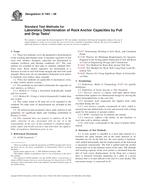
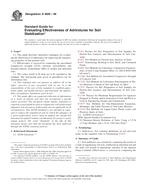 ASTM D4609-08
ASTM D4609-08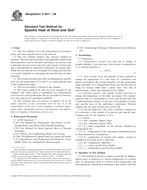 ASTM D4611-08
ASTM D4611-08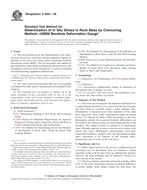 ASTM D4623-08
ASTM D4623-08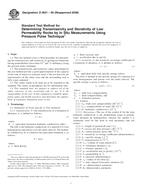 ASTM D4631-95(2008)..
ASTM D4631-95(2008).. ASTM D4647/D4647M-13..
ASTM D4647/D4647M-13..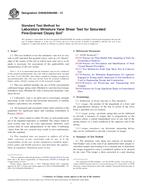 ASTM D4648/D4648M-13..
ASTM D4648/D4648M-13..
 Cookies
Cookies
